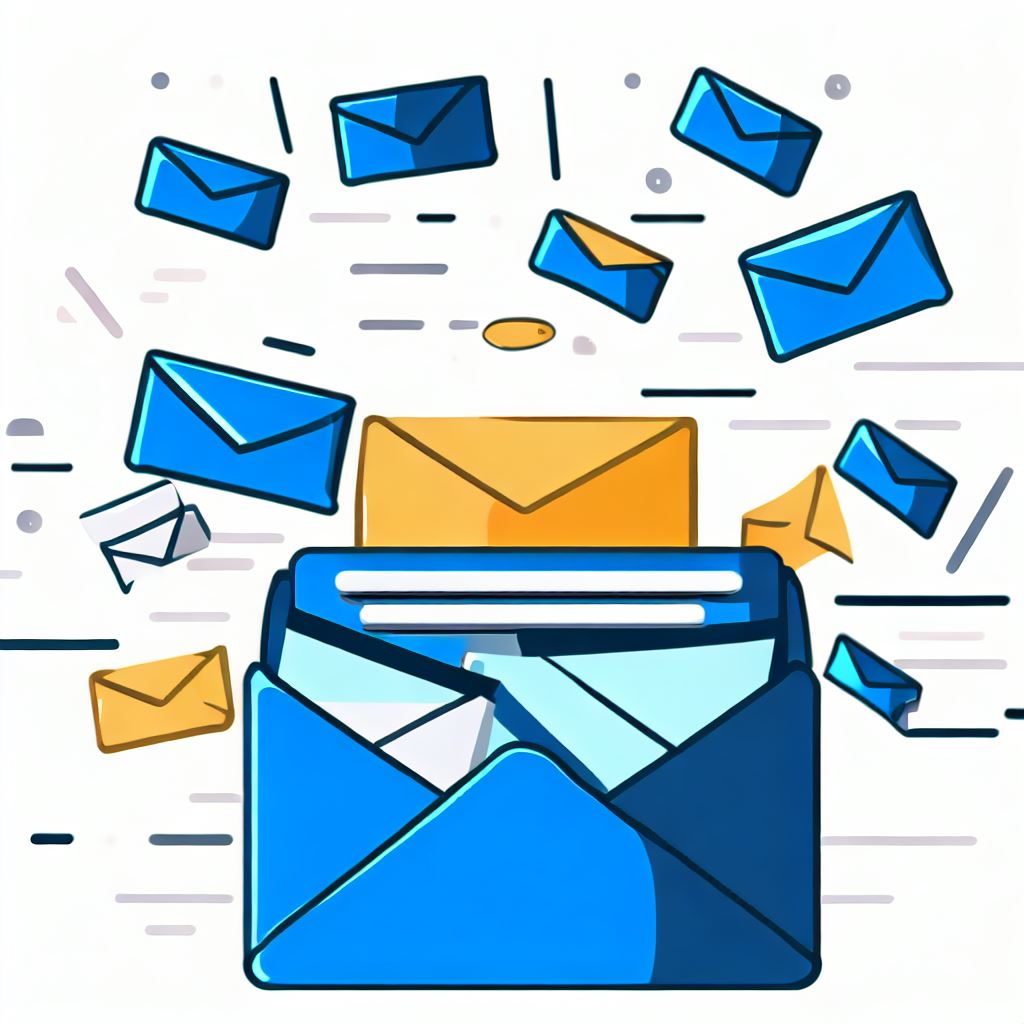Email open rates are the heartbeat of successful digital communication. They serve as a crucial metric, indicating whether your message resonates with your audience. So, it is essential to improve email open rates. High open rates signify effective communication, while low rates signal a need for improvement.
Low open rates pose several challenges. They result in missed opportunities, reduced engagement, and hindered conversions. Additionally, they can harm your sender’s reputation, making it harder to reach your audience’s inbox.
Email open rates hold the promise of increased engagement and conversions. When recipients open your emails, they’re more likely to take the desired actions, whether it’s making a purchase, signing up for a newsletter, or engaging with your content.
- Click here to preview verified prospect lists
Understanding Email Open Rates
Email open rates measure the percentage of recipients who open an email you’ve sent. They are calculated by tracking the number of opened emails divided by the total number of delivered emails. To detect opens, email clients often load tiny invisible images or use tracking pixels within the email content.
Determining a good email open rate depends on various factors, including industry, audience, and email type. Generally, a 15-25% open rate is considered average, but higher open rates are achievable and desirable.
Crafting a Captivating Subject Line
1. The Psychology of Curiosity
Your subject line acts as the initial point of contact with your audience. Curiosity is a powerful psychological motivator, and a well-crafted subject line can ignite it. When people are curious, they’re more likely to click and open to uncover what lies within the email.
2. The Power of Personalization
Personalization adds a human touch to your subject lines. When you address recipients by their name or reference their past interactions or preferences, it demonstrates that your email is tailored for them. This can significantly improve email open rates, as it makes recipients feel valued and connected.
3. A/B Testing for Effectiveness
Crafting the perfect subject line can be a challenge since what resonates with one audience might not work for another. A/B testing is your ally here.
By sending two versions of an email with different subject lines to segments of your audience, you can determine which one performs better. Continual testing and refinement based on data can help you optimize your subject lines over time.
4. Avoiding Spam Triggers
Your subject line plays a critical role in avoiding spam filters. Spammy language, excessive punctuation, and misleading content are common triggers that can send your emails to the spam folder.
By maintaining clean, honest, and relevant subject lines, you not only increase the chances of your emails reaching the inbox but also build trust with your recipients.
- Click here to preview verified prospect lists
Nurturing a Reputable Sender Identity
1. The Sender’s Name and Email Address
Your sender name and email address should be instantly recognizable to your recipients. Whether it’s your company name or a well-known individual within your organization, consistency in sender identity is key. This consistency helps recipients trust the source and improve email open rates.
2. The Importance of Authentication (SPF, DKIM, DMARC)
Email authentication protocols such as SPF (Sender Policy Framework), DKIM (DomainKeys Identified Mail), and DMARC (Domain-based Message Authentication, Reporting, and Conformance) are vital for email security. They prevent spoofing and phishing attacks and, at the same time, enhance your email deliverability.
3. Building Trust through Consistency and Transparency
Trust is a cornerstone of effective email marketing. Maintain a consistent sending schedule to set expectations for your audience. Be transparent about your intentions and the type of content you’ll provide.
Offer clear options for recipients to opt in or out of your emails, and honor those preferences promptly. Building a reputation for reliability and transparency goes a long way in nurturing trust with your email recipients.
- Click here to preview verified prospect lists
Perfecting Email Timing
1. Analyzing Recipient Behavior and Preferences
Understanding when your audience is most active and receptive to emails is crucial. Analyze data on when your recipients tend to open and engage with emails. This information can help you schedule your email sends for optimal times, increasing the likelihood of your messages being seen and acted upon.
2. Time Zone Considerations
If you have a diverse or global audience, consider time zone differences when scheduling your email campaigns. Sending emails at a time that aligns with the recipient’s local time zone can make your messages more relevant and timely.
3. The Frequency of Email Communication
Finding the right balance in email frequency is essential. Too many emails can overwhelm recipients and lead to unsubscribes, while too few can result in disengagement. Analyze engagement metrics and gather feedback to determine the ideal email frequency for your audience.
- Click here to preview verified prospect lists
Tailoring Content to the Audience
1. Segmentation and Personalization
Divide your email list into segments based on demographics, behavior, or preferences. By sending targeted content to specific segments, you can make your emails more relevant and engaging. Personalization goes a step further by addressing recipients by name or referencing their past interactions, creating a sense of connection.
2. Content Relevance and Value Proposition
Ensure that the content of your emails aligns with the interests and needs of your audience. Your emails should provide clear value, whether it’s informative, entertaining, or offering exclusive offers or solutions to their problems.
3. Creating Mobile-Responsive Emails
With a significant portion of email opens occurring on mobile devices, it’s crucial to design mobile-responsive emails. It means ensuring that your email templates adapt and display correctly on various screen sizes, providing a seamless experience for mobile users.
- Click here to preview verified prospect lists

Harnessing the Power of Preheader Text
Preheader text is like a hidden gem in email marketing, often overlooked but incredibly valuable. It’s the little snippet of text that shows up beside the subject line in many email clients, and it’s your chance to give recipients a sneak peek or some extra context that can tempt them to open your email.
Use this space wisely by summarizing your email’s main content, showcasing special offers, or asking an intriguing question. Experiment with different approaches to discover what resonates best with your audience. Crafting an engaging preheader can make a significant difference in open rates, as it provides recipients with a compelling reason to dive deeper into your email.
Adapting to the Mobile Revolution
1. The Influence of Mobile Devices on Email Open Rates
The world is becoming mobile, and it’s transforming how people engage with their emails. Increasingly, individuals are accessing their emails through smartphones and tablets. This shift holds immense significance because if your emails don’t function well on mobile devices, it can result in a subpar user experience, leading to reduced engagement and a drop in conversions.
2. Creating Email Templates Tailored for Mobile
To ensure your emails appear visually appealing and user-friendly on mobile devices, you need email templates that can adapt seamlessly. Responsive templates are the answer to this challenge. With responsive design, your emails will maintain their excellence and ease of use whether recipients open them on a computer or a mobile device.
3. Thorough Testing Across Diverse Devices and Email Apps
Email appearance can vary depending on the device or email app that recipients use. To guarantee that your emails consistently deliver an outstanding experience, conduct comprehensive testing.
Send test emails to a wide range of devices and email applications to identify any issues related to formatting or display. Timely resolution of these concerns is crucial to preserve recipient satisfaction and engagement.
- Click here to preview verified prospect lists
Encouraging Interaction with Calls to Action (CTAs)
1. How CTAs Improve Email Open Rates?
Calls to Action (CTAs) are like the steering wheel of your email conversions. They tell readers what to do next, like making a purchase, signing up, downloading, or sharing stuff. Making sure your CTAs are super clear and effective can make a big difference in how successful your email campaigns are.
2. Making CTAs that Grab Attention and Work
To get people to click your CTAs, make them stand out. Use bright colors, and easy-to-read words, and put them where people can’t miss them. And, don’t forget to make them easy to click on mobile devices, where most folks use their fingers to tap. Plus, testing different CTA styles can help you see which ones get the most clicks and conversions.
Tracking and Analyzing Email Metrics
1. Key Email Metrics
Monitoring email metrics is vital for evaluating the effectiveness of your campaigns. Open rates quantify how many recipients opened your emails, click-through rates indicate how many engaged with your links, and conversion rates reveal how many completed the desired action (e.g., making a purchase). These metrics offer valuable insights into what’s performing well and where improvements are needed.
2. Tools for Email Analytics
Utilizing email marketing platforms and analytics tools is essential for gathering and dissecting data on email performance. These tools furnish comprehensive reports on email metrics, recipient behavior, and engagement patterns. Harnessing these insights empowers you to make data-driven decisions aimed at enhancing your email strategy.
3. Using Data-Driven Insights for Continuous Improvement
Data serves as a precious resource for honing your email marketing strategy. Routinely scrutinize your email metrics to uncover trends and pinpoint areas ripe for enhancement. Adapt your content, timing, and targeting based on the revelations in your data. The objective is to perpetually refine and optimize to achieve superior results and heightened engagement over time.
- Click here to preview verified prospect lists
Avoiding Pitfalls
1. Steering Clear of Spammy Practices
Avoiding spammy practices is of utmost importance to uphold a positive sender reputation and ensure your emails find their way into recipients’ inboxes. Here are some practices you should steer clear of:
- Misleading Subject Lines: Using deceptive subject lines to entice recipients into opening your emails is not only unethical but can also lead to spam complaints.
- Excessive Capitalization and Exclamation Points: Overusing capital letters and exclamation points in subject lines and email content is a hallmark of spam and can trigger spam filters, hindering your email delivery.
- Hidden Unsubscribe Links: It’s vital to make the unsubscribe link easily accessible to recipients. Hiding or making it difficult to find can harm your sender’s reputation.
B. Recognizing the Danger of Excessive Emails
Bombarding your subscribers with an excessive number of emails can lead to various adverse outcomes:
- Subscriber Fatigue: Overwhelming recipients with frequent emails can lead to fatigue and irritation, causing them to disengage or unsubscribe.
- Decreased Open Rates: Frequent emails may result in lower open rates, as recipients become more selective about which emails they open.
- Higher Unsubscribe Rates: An abundance of emails often prompts subscribers to hit the unsubscribe button to regain control over their inboxes.
- Reduced Email Deliverability: High unsubscribe rates and spam complaints can damage your sender’s reputation, adversely affecting the deliverability of your emails.
Conclusion
Email open rates serve as your North Star, illuminating the path to enhanced engagement and conversions. Crafting compelling subject lines, fostering trust in your sender identity, mastering email timing, and tailoring content to your audience improve email open rates.
- Click here to preview verified prospect lists
As you embark on your email marketing expedition, armed with these insights and strategies, keep in mind that continual refinement driven by data-driven insights will be the wind in your sails, propelling you toward the exciting prospects of amplified engagement and conversions. Embrace email’s ever-evolving nature, and may your email open rates reach new heights on this voyage of growth and success.
